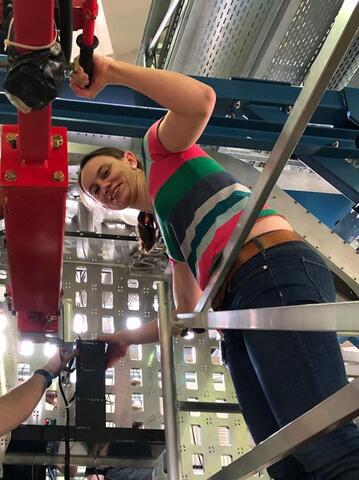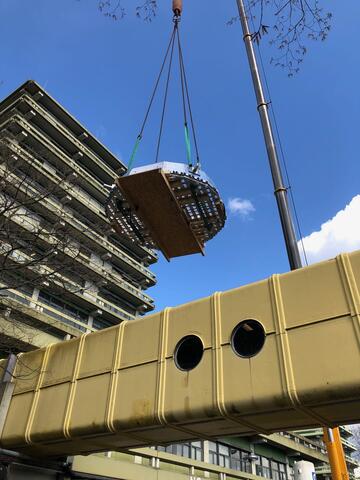Workshop „Physics Opportunities with Proton Beams at SIS100” was held in Wuppertal
PANDA meetings
04/03-08/03 2024 CM 24/1 in Münster
24/06-28/06 2024 CM 24/2 at GSI
25/06-26/06 2024 FEE/DAQ Workshop
04/11-06/11 2024 CM 24/3 at GSI
05/03-07/03 2025 WS at GSI
16/06-20/06 2025 CM 25 in Uppsala
The DIRC Detectors at the PANDA Experiment
A. Lehmann et al. (PANDA Cherenkov Group)
PA-PRO-2014-021.pdf
(2.76 MB)
PANDA is an experiment at the new FAIR facility at GSI and will, among other physics goals,
perform charmonium spectroscopy and search for gluonic excitations using high luminosity antiproton
beams up to 15 GeV/c. A high performance particle identification system applying DIRC
detectors will allow pion/kaon separation up to 4 GeV/c. A Barrel DIRC with fused silica radiator
bars or plates will surround the target at a radial distance of 48 cm and will cover a polar
angle range of 22 to 140 degrees; a novel Endcap Disk DIRC built of a segmented fused silica
disk of 210 cm diameter will be installed in the forward region to cover the polar angles from
5 to 22 degrees. The design of the optics and the readout of both DIRCs will be presented in
this paper. Different prototypes were tested in particle beams. The performance of the latest prototypes,
which are close to the final DIRC design, are discussed and compared to the PANDA
requirements.
perform charmonium spectroscopy and search for gluonic excitations using high luminosity antiproton
beams up to 15 GeV/c. A high performance particle identification system applying DIRC
detectors will allow pion/kaon separation up to 4 GeV/c. A Barrel DIRC with fused silica radiator
bars or plates will surround the target at a radial distance of 48 cm and will cover a polar
angle range of 22 to 140 degrees; a novel Endcap Disk DIRC built of a segmented fused silica
disk of 210 cm diameter will be installed in the forward region to cover the polar angles from
5 to 22 degrees. The design of the optics and the readout of both DIRCs will be presented in
this paper. Different prototypes were tested in particle beams. The performance of the latest prototypes,
which are close to the final DIRC design, are discussed and compared to the PANDA
requirements.





